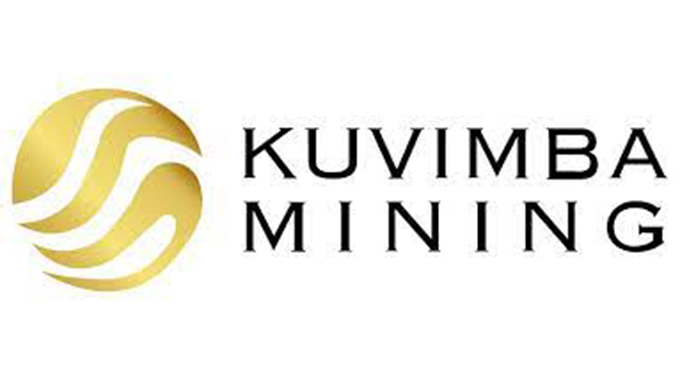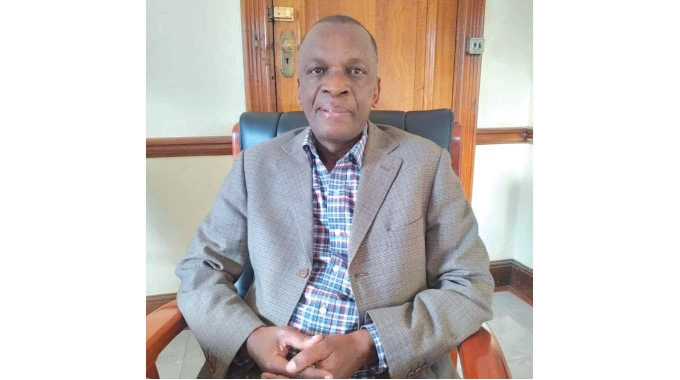Kuvimba breathes life into Bindura Nickel Corporation

Innocent Madonko Deputy Editor
ONE of Zimbabwe’s biggest mining companies, Kuvimba Mining House, has injected more than US$12 million into Bindura Nickel Corporation since taking over the asset in 2020, extending the lifespan of Trojan Mine from three to 12 years and positioning it to reclaim its place among the world’s leading nickel producers.
BNC’s long road to recovery could soon reach a decisive stage amid indications that full capacity utilisation at Trojan in Bindura could be attained during the next financial year which runs from April 1 this year to March 31 next year.
Key to this remarkable transformation is the takeover of the mine by Kuvimba, a giant company with mining interests straddling gold, chrome, lithium and nickel.
In line with the Second Republic’s quest to attain a US$12 billion mining economy this year, Kuvimba Mining House is playing its part by resuscitating most of the mines it has taken over through huge capital outlays and acquisition of new, modern equipment.
Kuvimba is owned by the Government (65 percent) and a consortium of private investors who hold the remaining 35 percent equity.
It operates BNC, Freda Rebecca Gold Mine, Shamva Gold Mine, ZimAlloys, Great Dyke Investments, Elvington mine, Jena mine and Sandawana mine in the Midlands.
At BNC’s Tojan mine in Bindura, Kuvimba has recapitalised the entity, buying a US$1 million exploration rig in July 2021 which extended the life of the mine by nine years and committing to invest a further US$60 million over the next five years.
What this has done is completely transform operations at Trojan, giving new impetus and breathing life into the sleepy town of Bindura. Considering that at its peak, Trojan employed more than 3 000 people in 2008, current figures of around 1,100 are encouraging given that the company was under care and maintenance between 2008 and 2013.
Projections are that staff levels will rise further beyond 3 000 when a new mine is opened at Kingston Hill, about 4 km from the current operations at Trojan as the site has about 120 million tonnes of nickel ore.
At its peak, Trojan processes 1 million tonnes of nickel ore per annum from a 12,5 million tonne body of ore and the excitement around Kingston Hill is therefore understandable given the size of the nickel ore which is 10 times larger.
Together with its sister mining companies, Freda Rebecca (Bindura) and Shamva Gold Mine, BNC is contributing immensely to the country’s exports and foreign currency earnings.
Briefing journalists during a tour of Trojan mine on Tuesday, BNC Managing Director, Engineer Thomas Lusiyano, was upbeat about the prospects for Trojan and its other sister nickel mines some of which are dormant at the moment.
He paid tribute to Kuvimba Mining House for investing in the recapitalisation of BNC.
“When I took over BNC, the life of mine for Trojan was only three years at that stage, and unfortunately, because of that short life of mine, even employees here were not sure if the business was coming or going. Investors were not even sure whether there was a business here or not.
“When Kuvimba Mining House took over, there was a lot of investment that was deliberately done to increase life of mine.
“The first thing to do was to procure a brand new exploration rig and this cost US$1million. So with this one machine, we began exploration in July 2021,” said Eng Lusiyano who was appointed MD in November 2020.
“The net effect of that has been to increase life of mine from 3 years to 12 years and this is where we are as we speak but we are continuing to explore and increase life of mine. The resource continues down and it is open ended so we can’t really tell where it will end. What was required was machinery for exploration which Kuvimba Mining House has provided since it began investing in this business some three years ago. So we are grateful to Kuvimba Mining House for the investment that has been done in this business.
“Now there is confidence, now everyone can see that Trojan Nickel mine has a long life for exploiting this mineral resource that we call nickel and other by products that we are producing here”.
Shedding more light on the recapitalisation of Trojan mine, Eng Lusiyano, a Mining Engineer with vast experience in the industry, said the bulk of the US$60 million required over the next five years will go towards continuous acquisition and upgrade of underground mining mobile equipment and to undertake capital development to unlock new areas for mining.
He said while life of mine has increased, this is based on exploration work that has been done using the new exploration drill rig.
So the real work will now come when we undertake capital development that will unlock areas of production, so this is where the bulk of that US$60 million that will be required for the next five years will go,” said Eng Lusiyano.
Over the last decade, Trojan mine had shrunk to a fraction of its former self but thanks to investment by Kuvimba, which totals US$12 million in capital expenditure since it took over, the mine is slowly regaining its footing.
“Trojan had become a low volume high grade mine with people focusing on the mining of only the high grades which constitute three percent of the resource, so in terms of utilisation of the stored capacity, the mine was utilising only 40 percent of stored capacity. So this is what we are seeking to change as we go through the transition that we are undertaking right now so that we can fully utilise 100 percent of stored capacity, which is a million tonnes of ore processed per annum.
“This is what we are driving towards and right now as we speak. We are in a transition period, moving from low volume high grade towards the high volume low grade mining strategy,” said Eng Lusiyano.
Optimum capacity utilisation would be achieved in the coming financial year.
“Our financial year begins 1 April to 31 March the next year. So by the end of this coming financial year, the mine would have fully transitioned from a low volume high grade to a high volume low grade fully utilising its stored capacity both underground in the shafts and in the concentrator”.
BNC has a high capacity smelter at Trojan and intends to use it in partnership with other nickel mines in the region. It was refurbished between 2016 and 2017 up to 83 percent of capacity after lying idle from 2008.
Currently, output from BNC accounts for 30 percent of feed into Bindura Smelter and Refinery following the closure of Epoch, Madziwa and Shangani nickel mines which formed part of BNC.
The company intends to use the smelter using output from the new mine at Kingston Hill and Hunters Road Mine between Kwekwe and Gweru which it intends to re-open.
Eng Lusiyano said they were looking at two options.
“Firstly, is to look for feed from within our own resources to feed that smelter. Trojan nickel mine alone at its peak can only provide 30 percent of the required feed. Traditionally when the smelter was running full time, it was getting feed from Trojan, Epoch, Shangani and Madziwa mines.
“So all these mines were bringing feed to the concentrator here but since the closure of these mines in 1999, 2000 and 2008, this smelter has also been mothballed because it does not have enough feed. So what we are looking at is instituting our own projects internally, open up new mines particularly Kingston Hill and Hunters Road so that we can have enough feed for that smelter.
“The other route is to go into partnership with other large mining houses particularly those that are into nickel and copper so that they can also use the smelter. As we speak right now we have signed an NDA (Non-Disclosure Agreement) with a huge Zambian entity that intends to mine nickel and copper in Zambia. They are trying to avoid building a new smelter so they intend to use our smelter”.
On corporate social responsibility, Eng Lusiyano said they have dedicated 0,5 percent of their annual revenue to assisting the community around Bindura with notable projects being a primary school at Trojan which has been refurbished, the town’s refuse, water and reticulation system which the company has upgraded in conjunction with the municipality and collaborations with institutions of higher learning such as Zimbabwe Ezekiel Guti University and Bindura University of Science Education. Their CSR budget will be bumped up to one percent of annual revenues next year.











Comments